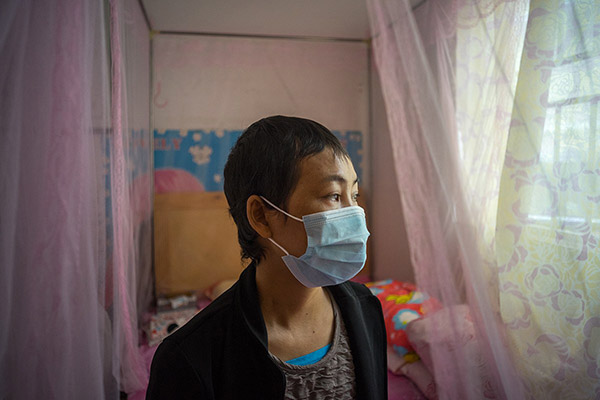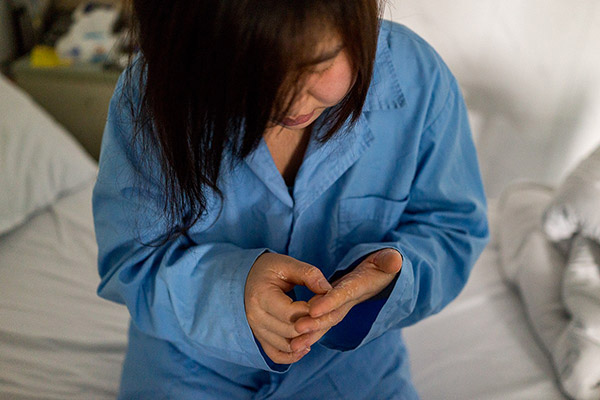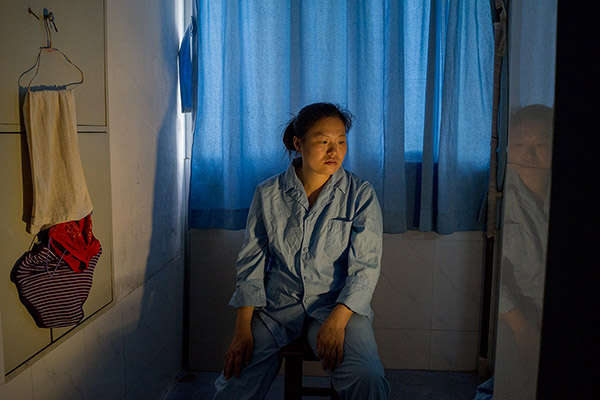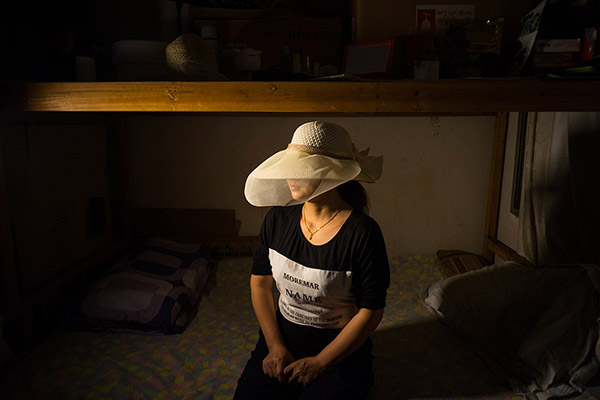

Poisoned by n-hexane, benzene, and other chemicals, these chinese workers are fighting for their health- agaisnt their illnesses and their employers.
sim chi yin


Poisoned by n-hexane, benzene, and other chemicals, these chinese workers are fighting for their health- agaisnt their illnesses and their employers.
After working for five years at Huasheng Electric Motor, Xie was diagnosed with leukemia in late 2013. Her responsibilities at the workshop put her in direct contact with hazardous printing materials. A doctor linked the cancer to benzene exposure, which Huasheng disputed. But the Guangdong Prevention and Treatment Center for Occupational Diseases analyzed an ink sample from the company and found xylene, methylbenzene, and ethylbenzene. The company paid for her first stage of chemotherapy and a bone marrow transplant (donated by her sister). Unable to afford the rest of the treatment on her own, Xie borrowed money from friends. She says Huasheng paid 1,300 yuan (about $210) a month for medical costs until last December, but now she's fighting for a 40,000 yuan (about $6,500) reimbursement.
In a factory manufacturing imitation iPhones, Lin used n-hexane as a cleaner. A few months in, she had a pins-and-needles sensation in her limbs. A hospital diagnosed her with nerve damage and estimated that the treatment she needed would take about two years, with an average monthly medical cost of 8,000 yuan (about $1,300). The factory paid only part of her medical expenses and has not contributed to her cost of living or loss of working time. When she started her job, Lin didn't realize she was pregnant with her second child. After her doctor warned her of the possibility of deformities, Lin decided to get an abortion. “At that moment, all I thought was I wanted to end my life. I couldn't even, however, lift a finger to kill myself,” she says.
He is recovering from organic-solvent poisoning. As a circuit board inspector in a small Shenzhen factory, she checked cell phone parts cleaned with an unknown chemical. “It smelled bad,” He recalls. “We just called it ‘circuit wash.’” The factory didn't require gloves. After about a month, she went to the hospital in September 2014 with a fever and rash. The Guangdong Prevention and Treatment Center for Occupational Diseases attributed her symptoms to working conditions. “I didn't know there were occupation-related diseases until I got sick,” He says. The factory paid only for her medical expenses at the center, not for prior costs. Fearing retaliation, He asked to be identified only by her last name.
Leaving her son in the care of her parents in Hubei, Yao moved to Shenzhen to work in a camera factory. Her duties mostly consisted of cleaning glass optics, painting a coating onto parts, and polishing lenses. They exposed her to chemicals for up to 10 hours a day. A series of air-quality tests of her work environment revealed the presence of trichloroethylene, n-hexane, benzene, methylbenzene, and xylene. In 2007 she began experiencing constant headaches. Following her doctor's advice, she stopped working in July 2013. Yao requested to be identified only by her last name.

